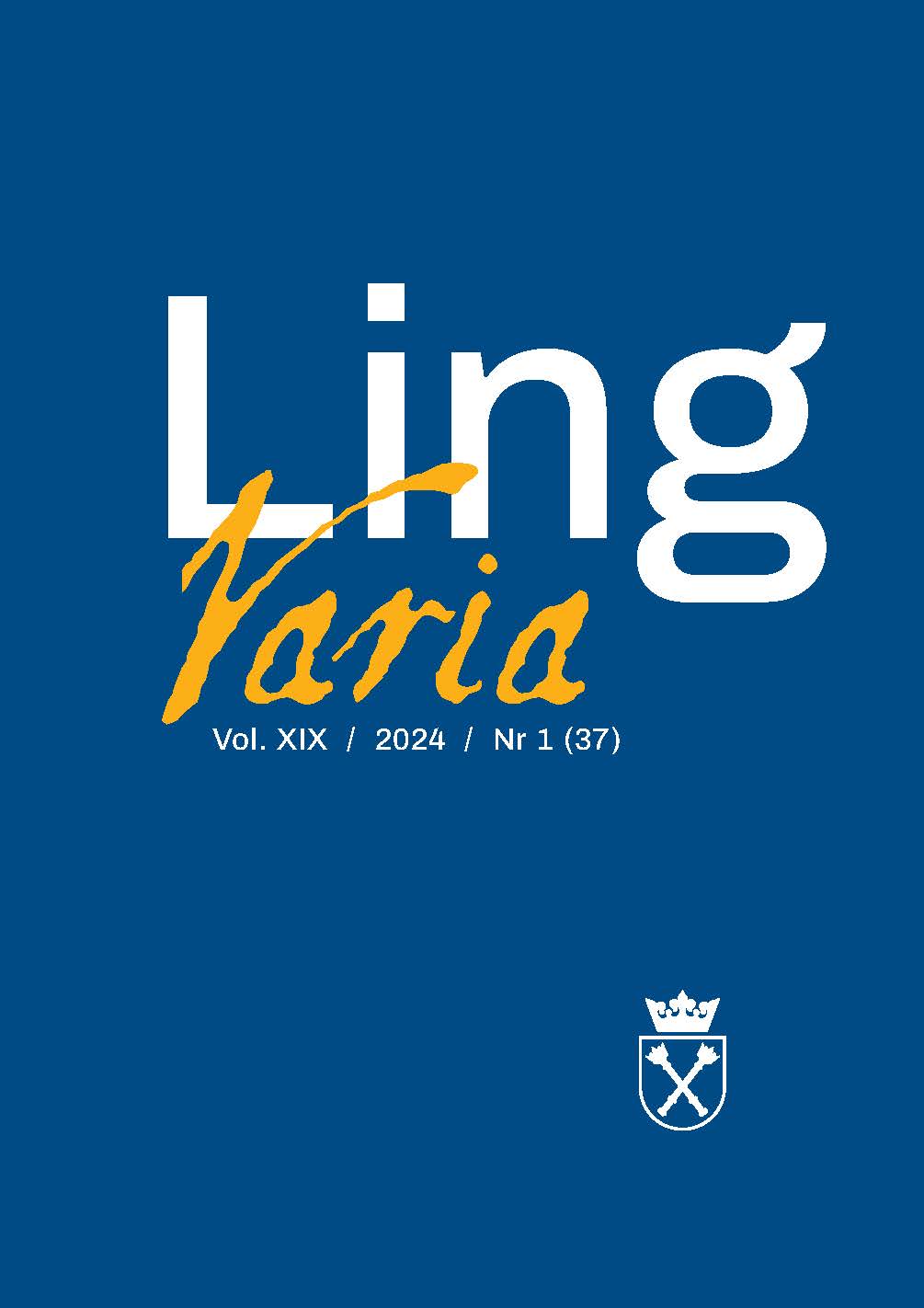Specyfika staropolszczyzny a anotacja gramatyczna. O lematyzacji tekstu staropolskiego
DOI:
https://doi.org/10.12797/LV.19.2024.37.11Słowa kluczowe:
staropolskie apokryfy Nowego Testamentu, średniowieczna polszczyzna, anotacja gramatyczna, lemat, lematyzacja, forma słownikowaAbstrakt
SPECIFIC FEATURES OF OLD POLISH LANGUAGE AND GRAMMATICAL ANNOTATION: LEMMATIZATION OF OLD POLISH TEXTS
The article is dedicated to grammatical annotation of Old Polish texts. It discusses the problem with the lemmatization of a medieval text. In the Apocrypha tool, a lemma is not the same as the basic form of a word. It is only a dictionary form, or a kind of a label. The author of the article presents the reasons for this decision and the adopted rules for assigning lemmas to different grammatical classes. The article also shows the criteria of the repartition of lemmas. These criteria are the frequency of the basic form in the text or texts, the persistence of the form or the differentiation of meanings. Third person pronouns turned out to be particularly difficult for lemmatization. According to the accepted rules, they have a gender, but do not conjugate with a gender (which forced, for example, the adoption of the masculine lemma ONY). The other examples are forms such as siebie, sobie [self], for which the lemma JA was adopted. The article also describes the issues of determining the lemma boundary when annotating words conjugated with different single morphemes: particles, agglutinants or residual forms of personal pronouns. All of the solutions adopted in the tool and presented in the article aimed at respecting the Old Polish language specific features while facilitating the analysis of the material.
Pobrania
Bibliografia
Apocrypha: D. Rojszczak-Robińska, O. Ziółkowska, D. Masłej et al. (red.), Staropolskie apokryfy Nowego Testamentu, [on-line:] apocrypha.amu.edu.pl.
Deskur A., Nowak-Pasterska E., Rojszczak-Robińska D. et al., 2022, Anotacja gramatyczna tekstu staropolskiego – problemy i wyzwania, „LingVaria” XVII, nr 2 (34), s. 163–180. DOI: 10.12797/LV.17.2022.34.11. DOI: https://doi.org/10.12797/LV.17.2022.34.11
Eder M., Twardzik W., 2007, Indeksy do Słownika staropolskiego, Kraków.
Gruszczyński W., Bronikowska R., 2024, Instrukcja korzystania z wyszukiwarki do Elektronicznego Korpusu Tekstów Polskich z XVII i XVIII wieku, [on-line:] https://korba.edu.pl/manual.
Nowak-Pasterska E., Rojszczak-Robińska D., Stelmach W. et al., 2023, Kodeks Wawrzyńca z Łaska jako źródło słowników historycznych, [w:] D. Rojszczak-Robińska, A. Deskur, W. Stelmach (red.), Język staropolskich apokryfów. Pytania, problemy, perspektywy, Poznań, s. 159–194.
Przepiórkowski A., Bańko M., Górski R.L. et al. (red.), 2012, Narodowy Korpus Języka Polskiego, Warszawa.
Rojszczak-Robińska D., Wismont M., Zalejarz K. et al., 2023, Specyfika staropolszczyzny a anotacja gramatyczna. O potrzebie nowych wartości kategorii, „LingVaria” XVIII, nr 1 (35), s. 99–111. DOI: 10.12797/LV.18.2023.35.07. DOI: https://doi.org/10.12797/LV.18.2023.35.07
SPXVI: Słownik polszczyzny XVI wieku, t. I–IV, red. komitet redakcyjny, t. V–XVII, red. M.R. Mayenowa, t. XVIII–XXXIV, red. F. Pepłowski, t. XXXV–XXXVI, red. K. Mrowcewicz, P. Potoniec, Wrocław – Warszawa – Kraków 1966–2012.
SStp: S. Urbańczyk (red.), Słownik staropolski, t. I–XI, Wrocław 1953–2002.
Stelmach W., Wismont M., Zalejarz K. et al., 2023, Specyfika staropolszczyzny a anotacja gramatyczna. Kategorie czasu i trybu, „LingVaria” XVIII, nr 2 (36), s. 133–149. DOI:10.12797/LV.18.2023.36.09. DOI: https://doi.org/10.12797/LV.18.2023.36.09
Pobrania
Opublikowane
Numer
Dział
Licencja

Utwór dostępny jest na licencji Creative Commons Uznanie autorstwa – Użycie niekomercyjne – Bez utworów zależnych 4.0 Międzynarodowe.






